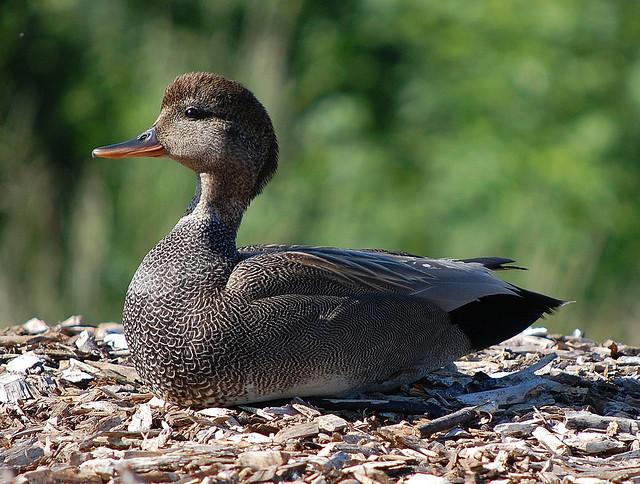The US Department of Agriculture (USDA) said yesterday that an H5N8 avian flu virus has been found in another wild bird in the West, and the agency has released more information about an H5N2 avian flu outbreak in southeastern Washington state.
In a report to the World Organization for Animal Health (OIE), the USDA said an H5N8 virus was found in a hunter-killed gadwall duck in the Pacific flyway. The agency did not list the specific location, but a Jan 5 Facebook post from the California Waterfowl Association said the duck was shot in Butte County in north-central California.
The USDA said genetic sequences from the gadwall duck virus are "essentially identical" to corresponding sequences from an H5N8 virus reported Dec 16 in a captive gyrfalcon in Whatcom County in northwestern Washington state. The gyrfalcon had been fed hunter-killed birds.
H5N2 in Washington
In a separate report to the OIE yesterday, the USDA said an H5N2 virus from an outbreak in a 178-bird backyard poultry flock in Benton County in southeastern Washington is 99% similar to the H5N2 virus that was found in a wild pintail duck in Whatcom County in mid-December. Whatcom County borders a part of British Columbia where commercial poultry farms were recently hit by H5N2 outbreaks, but no H5N2 or H5N8 outbreaks have been reported in US commercial poultry recently.
Two other backyard poultry flocks with links to the Benton County flock have been quarantined, and test results were pending, according to the USDA report. The Tri-City Herald, a newspaper in Benton County, reported Jan 6 that a second backyard flock of about 500 poultry in the area, with links to the first one, had been hit by avian flu.
The second outbreak was confirmed yesterday in a statement by the Washington State Department of Agriculture (WSDA), which said authorities completed work to control the virus's spread at the two sites on Jan 6. The agency set up a quarantine zone covering places within 10 kilometers of the two outbreak sites, saying no poultry or poultry products can be moved out of the zone without a special permit.
The WSDA said the presence of highly pathogenic H5N8 and H5N2 viruses in wild waterfowl continues to pose a risk to poultry, urging owners to protect their flocks from contact with wild birds.
Meanwhile, German authorities detected H5N8 viruses this week in a captive stork and in two hunter-killed mallard ducks, according to separate machine-translated media reports posted by FluTrackers, an infectious-disease news message board, and by the blog Avian Flu Diary.
The infected stork was in the Rostock Zoo in Mecklenburg–Western Pomerania state in northeastern Germany, and the ducks were killed in Saxony-Anhalt, another northeastern state, according to the reports. Germany reported two infected poultry flocks in different regions in November and December.
Study: H5N1 outbreaks follow migrations
In other developments, scientists writing this week in the Proceedings of the National Academy of Sciences (PNAS) say they found a close association between H5N1 outbreaks and wild bird migrations in Asia.
The authors, from several countries, used H5N1 sequence data, satellite data on bird migration patterns, and records of H5N1 outbreaks to evaluate the role of migratory birds in the spread of H5N1.
They found that the timing of outbreaks matched up with that of migrations within each flyway and that the migration network better reflected the viral sequence data than other networks did, suggesting that migrations contribute to seasonal H5N1 outbreaks and large-scale transmission of the virus along flyways.
"These findings have potentially far-reaching consequences, improving our understanding of how bird migration drives the periodic reemergence of H5N1 in Asia," the authors wrote.
See also:
Jan 7 OIE report on H5N8 detection
Jan 5 California Waterfowl Association Facebook post
Jan 7 OIE report on H5N2
Jan 6 Tri-City Herald story
Jan 7 WSDA statement
Jan 8 FluTrackers post on H5N8 in stork
Jan 7 Avian Flu Diary post on H5N8 in mallards
Jan 6 PNAS report on H5N1 and bird migrations




















